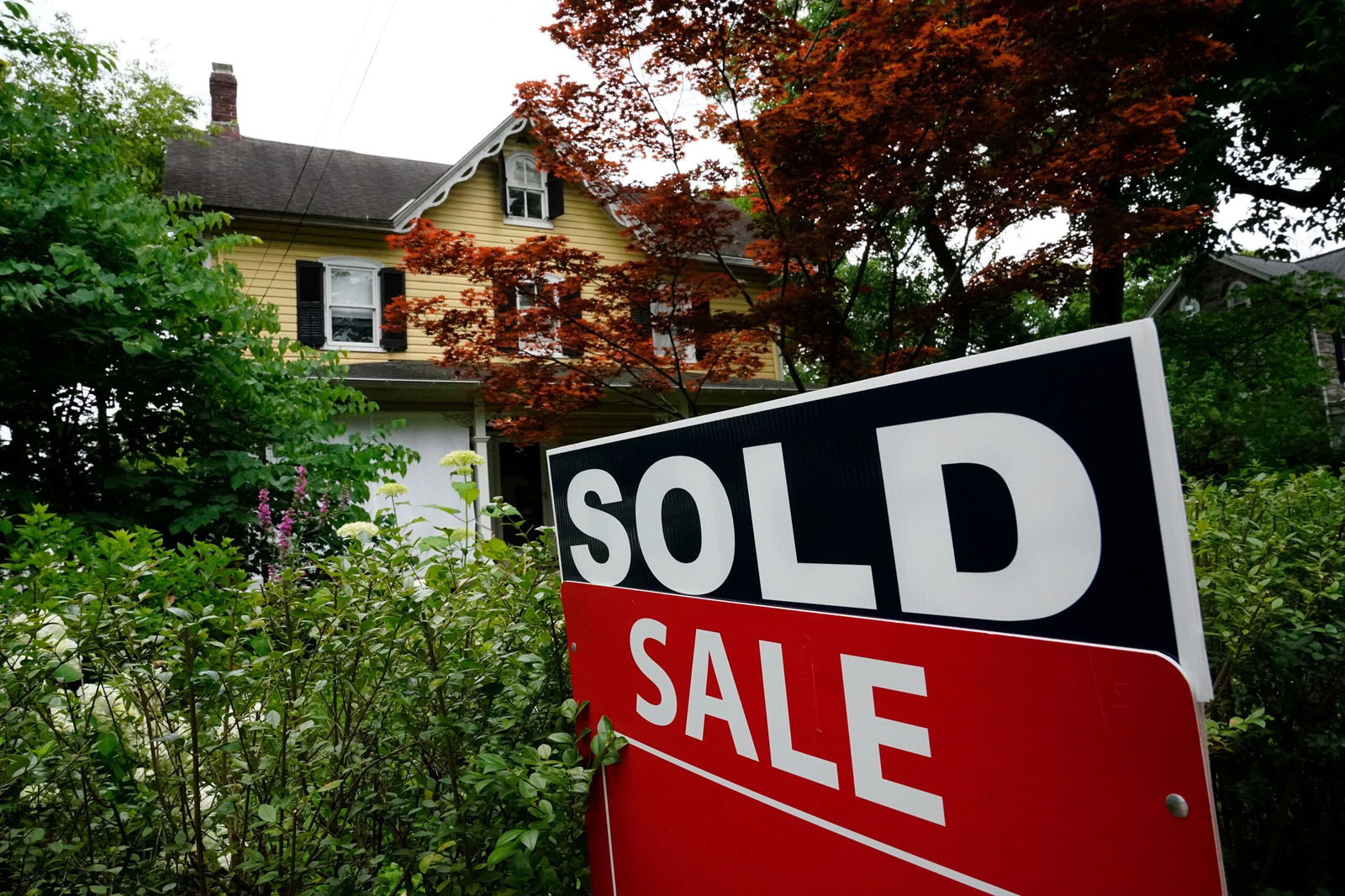They bought a house expecting rates to fall. They’re still waiting

Millions of Americans have been locked in mortgage rates above 6% since 2022. Many were hoping to refinance by now.
By Samantha Delouya, CNN
(CNN) — Joe Dalesandro didn’t expect to keep his mortgage rate at 6.99% for very long when he purchased a new home with his girlfriend last summer in Myrtle Beach, South Carolina. He’d refinance soon, he reasoned.
He was wrong.
“We always thought they would go down, and fairly quickly,” Dalesandro said of interest rates. “It has caught us by surprise that it hasn’t come down.”
Average mortgage rates in the US have hovered above 6% for nearly three years. Many Americans who bought homes in that time might have expected lower rates and a chance to refinance by now. But so far, relief hasn’t come. Combined with inflation boosting home repair prices, the costs of homeownership are more than many people bargained for.
Dalesandro is one of millions of Americans who locked in a home loan rate above 6% in the years since the Federal Reserve aggressively hiked interest rates from ultra-low levels to tame inflation between 2022 and 2023.
The Fed moves sent mortgage rates, which track the 10-year US Treasury yield, on an upward climb.
Since then, the Fed has cut rates more slowly than some economists had initially expected, with inflation still running above the bank’s 2% target.
Today, the average 30-year fixed mortgage rate, the most popular mortgage loan in America, remains stuck just under 7%. While it’s lower today than it was last summer when Dalesandro purchased his Myrtle Beach home, mortgage rates remain higher than they were at any point between 2008 and 2022.
President Donald Trump’s recent tariff policies threaten to kick up inflation once again, throwing into question how much the Fed will cut interest rates in the near future.
A higher mortgage rate can add hundreds, even thousands, to a homeowner’s monthly payments. For Dalesandro, who is 77 and retired, his elevated mortgage payment has meant he has had to keep a careful budget.
“We just wish we had more expendable income,” he said.
‘I should have just stayed renting’
Angel Scheid, a marketing executive in Los Angeles, purchased her one bedroom, one bathroom home in 2022, when competition in the housing market had hit a fever pitch.
Homes on the market were fielding multiple offers, sometimes being bid up by hundreds of thousands of dollars.
Scheid bid slightly above the asking price, ultimately purchasing her home for $915,000, with a 5.99% interest rate.
At the time, single-family homes were rarely selling for under $1 million in Los Angeles, and Scheid’s home required significant repairs, which she said ran over budget amid the 2022 inflation surge.
“I thought I was going to buy it and six months later, I was probably going to refinance,” Scheid said. “I was wildly off.”
Many financial advisors say refinancing is worth the cost if you can lower your interest rate by at least one percentage point. But Schied no longer expects rates to fall below 5% anytime soon.
“I don’t see any hope on the horizon at this point,” she said. “Now people would be clamoring to get my rate of 5.99%.”
Still, Scheid said she constantly questions whether she made the right choice buying her home.
Since Scheid purchased her home in 2022, home prices have softened across the country. Nearly one-third of the largest 100 markets are now showing year-over-year price dips of at least a full percentage point from recent highs, according to a recent analysis from financial services firm Intercontinental Exchange.
“I’m looking at a pretty high monthly payment, and it’ll be a while before I can even consider selling without taking a significant loss,” Scheid said. “I just get this feeling of being trapped.”
“I should have just stayed renting,” she added.
Even some homeowners who took out loans before the pandemic are feeling the sting of higher rates.
Jesús Hernández didn’t expect interest rates to rise sharply when he took out an adjustable-rate mortgage (ARM) to buy his home in Tucson, Arizona, in 2019.
Unlike more common fixed-rate mortgages, ARMs can offer short-term relief in the form of lower initial payments. But they come with a catch: After a set introductory period, the interest rate adjusts periodically based on market conditions, and it can climb quickly.
These loans have grown more popular in recent years as some buyers bet the Fed will lower rates in the next few years, giving them time to refinance before their ARM resets. In the first quarter of this year, ARMs made up more than a quarter of new conventional mortgages, according to a recent report from the Philadelphia Fed, up from just 7.8% in the first quarter of 2021.
For Hernández, his payments surged after his 2% introductory rate expired.
“It was going to go up to 6% or 7%, which would take my payments up by more than a thousand dollars a month,” he said.
As his payments climbed and unexpected home repair costs piled up, Hernández turned to his bank, which eventually agreed to refinance the loan at a 4.35% rate.
Looking back, Hernández said he wishes he had chosen a fixed-rate mortgage, even if it would have meant the initial cost was higher. “I went through headaches with the variable rate,” he said.
The-CNN-Wire
™ & © 2025 Cable News Network, Inc., a Warner Bros. Discovery Company. All rights reserved.



